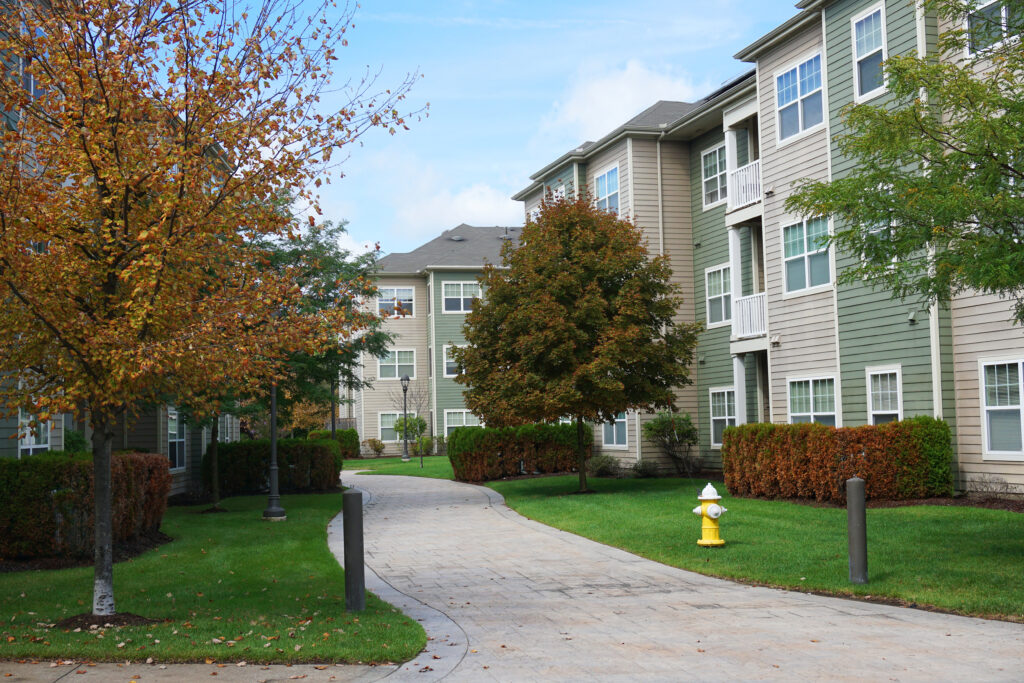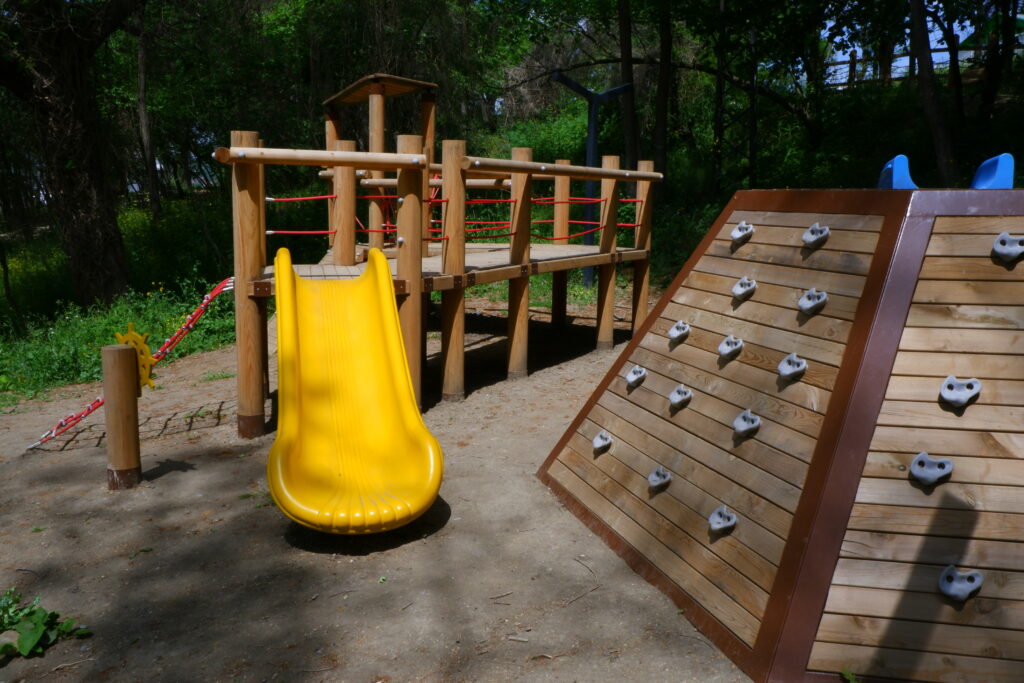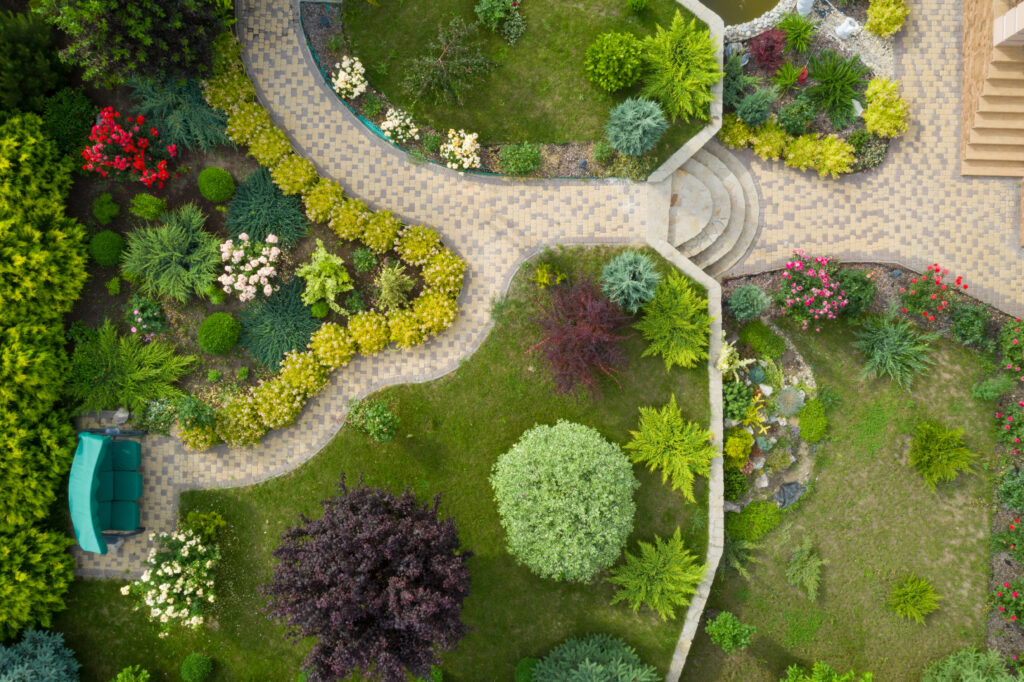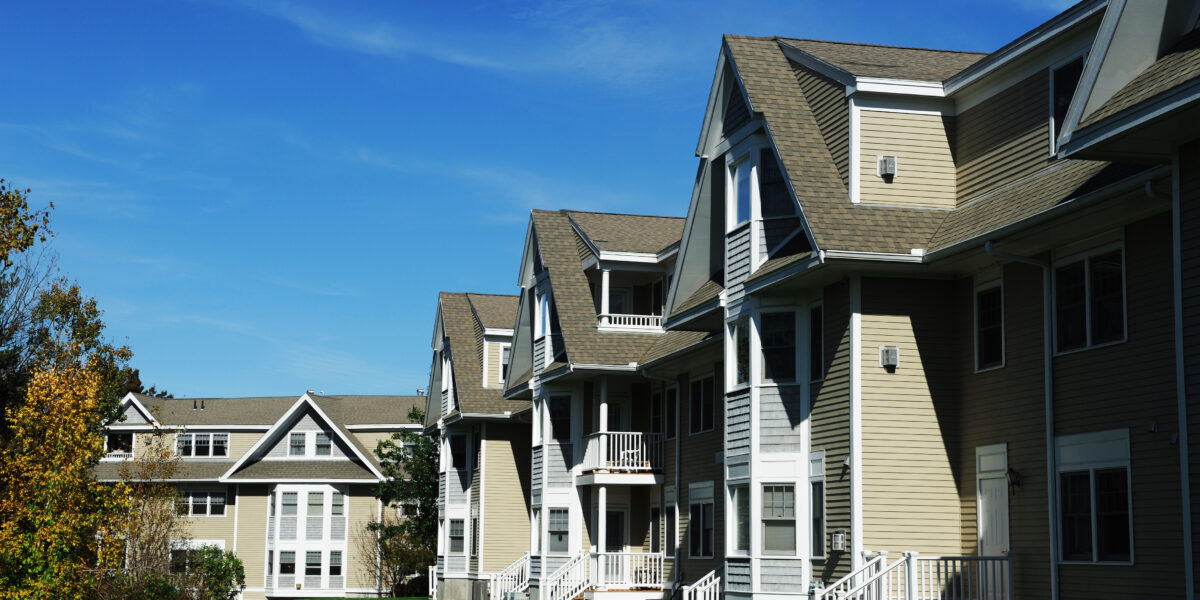Homeowners Associations (HOAs) are tasked with maintaining the aesthetic appeal and functionality of common areas in their communities. Whether it’s an apartment complex, townhome, 55 plus comminutes, or a subdivision, a well-landscaped common area enhances property values, fosters a sense of community, and improves the overall quality of life for residents and curb appeal. However, achieving these goals requires a thoughtful approach to landscape design and cost management.
This guide from our expert landscapers in Dracut, MA, explores the importance of HOA landscaping, practical ways to enhance common areas, strategies for reducing landscaping costs, and how professional landscaping companies like Dracut Landscaping can help create attractive, sustainable spaces that meet your community’s needs. It can be very useful to review with your HOA landscaping committee when developing landscaping ideas for your community.
The Importance of HOA Landscaping
HOA-managed common areas serve as the visual and social centerpiece of a community. From lush green spaces at the entrance to carefully maintained seating areas, these landscapes create a welcoming atmosphere and set the tone for the community. Attractive, well-maintained common areas make a powerful first impression on visitors and potential homebuyers, boosting property values and enhancing the overall reputation of the neighborhood.
In residential communities, an inviting landscape encourages outdoor activity and fosters social interaction among neighbors. It’s important to work with a landscape maintenance company that understands homeowner association landscaping expertise and works with HOA board members to satisfy their wants and needs.
Landscaping plays a key role in the overall identity of a community. For example, beautifully landscaped gardens and tree-lined walkways in a subdivision convey a sense of pride in ownership, while modern, low-maintenance hardscapes in an office park can reflect the community’s commitment to sustainability and professionalism. By investing in professional landscaping, HOAs ensure that their common areas are both functional and visually appealing, while also enhancing the long-term value of the property.

Enhancing Common Areas: Key Features to Consider
To maximize the impact of your HOA’s landscaping efforts, it’s essential to incorporate a variety of elements that cater to the diverse needs of residents, tenants, and visitors. Here are several features to consider when enhancing your community’s common areas:
1. Seating Areas: Creating Social Spaces for Relaxation
Seating areas are a crucial element of any well-designed common area, providing residents and visitors with comfortable spots to relax, socialize, and enjoy the surrounding landscape. Benches, tables, and chairs can be placed along walking trails, near gardens, or in shaded areas to create peaceful retreats. Seating options should be chosen to complement the overall design of the community, whether that means sleek, modern benches for a commercial complex or rustic wooden chairs for a residential neighborhood.
2. Patios & Hardscapes: Durable, Low-Maintenance Gathering Spaces
Patios and other hardscaping elements add a functional and visually striking component to common areas. Hardscapes are made from materials like stone, brick, or concrete pavers, which require far less maintenance than grassy areas or flower beds. These durable surfaces are ideal for creating patios, seating areas, and outdoor dining spaces where residents can gather for social events, family picnics, or quiet moments of relaxation.
3. Walking Trails: Encouraging Outdoor Activity
Walking trails are a valuable addition to any community, providing residents with safe, accessible paths for walking, jogging, and cycling. Trails encourage outdoor exercise and help reduce foot traffic in grassy areas, which can be difficult to maintain. To enhance both functionality and visual appeal, walking trails should be integrated seamlessly into the property’s overall landscape design, with carefully chosen materials such as gravel, stone, or wood chips.
Adding lighting along the trails can increase safety and extend their usability into the evening hours. For larger properties, trails can be designed to connect different areas of the community, such as gardens, seating areas, and playgrounds, creating a cohesive and enjoyable outdoor experience for residents and visitors alike.

4. Playscapes: Family-Friendly Spaces for Active Play
For communities with families, playscapes are an essential feature of common areas. A well-designed playscape provides a safe, engaging space where children of all ages can play, socialize, and explore. Playscapes can be customized to include age-appropriate equipment, such as slides, swings, climbing structures, and sensory play areas, ensuring that there’s something for toddlers, preschoolers, and older children alike.
To ensure long-term sustainability, consider using low-maintenance materials like synthetic turf, poured rubber, or rubber mulch for the play area’s surface. These materials are durable, safe, and require minimal upkeep compared to traditional options like wood chips or sand. Playscapes should also be strategically placed near seating areas, so parents and caregivers can easily supervise their children while relaxing in a comfortable environment.
5. Common Area Gardens: Adding Color & Life
Gardens filled with vibrant flowers, shrubs, and native plants are essential for creating a welcoming and aesthetically pleasing outdoor space. Gardens not only beautify the landscape but also promote biodiversity by attracting pollinators like butterflies, hummingbirds, and bees. Incorporating native, drought-resistant plants reduces the need for excessive watering and maintenance, helping to lower long-term landscaping costs.
When designing a garden for a common area, it’s important to consider the overall aesthetic of the community. For example, formal gardens with neatly trimmed hedges and symmetrical flower beds might be appropriate for a luxury condominium complex, while a more natural, free-flowing design with wildflowers and native grasses may better suit a residential subdivision. The goal is to create a harmonious space that enhances the community’s appeal and provides a relaxing environment for residents and visitors.
How to Reduce HOA Landscaping Costs: Practical Strategies
While creating a beautiful landscape is important, cost management is equally essential. Fortunately, there are several ways to reduce landscaping expenses without sacrificing the quality or appearance of your common areas. By making smart choices in design, plant selection, and maintenance practices, HOAs can achieve a cost-effective and sustainable landscape.
1. Build Hardscaping: Low-Maintenance, High-Impact Features
Hardscaping elements like stone paths, patios, and seating areas require far less maintenance than traditional green spaces. These features don’t need to be watered, mowed, or fertilized, making them a cost-effective solution for busy HOAs looking to minimize ongoing upkeep. In addition to being low-maintenance, hardscapes are also durable, making them ideal for high-traffic areas where grass and plants may struggle to thrive.
2. Choose Low-Maintenance, Drought-Resistant Plants
The types of plants you choose for your HOA’s landscape can have a significant impact on maintenance costs. Opting for drought-resistant plants, native species, and perennials that thrive in your region can drastically reduce the need for irrigation, fertilization, and pest control. Native plants are particularly well-suited to the local climate, requiring less water and care than non-native species.

3. Prioritize High-Impact Areas: Maximize Your Budget
When working with a limited budget, it’s important to prioritize the most visible and frequently used areas of the property. Entryways, main pathways, and central gathering spaces should be the focus of your landscaping efforts, as these areas make the greatest impression on residents and visitors. Enhancing these high-traffic areas first ensures that your landscaping investment has the maximum impact on the community’s appearance and appeal.
4. Hire Professional Landscapers: Save Money in the Long Run
While it may seem more cost-effective to handle landscaping tasks in-house, or using volunteers, like owners, this seems like a great idea but can quickly become a large effort. Hiring a professional landscaping company like Dracut Landscaping can actually save money in the long run. Professional landscapers have the expertise and experience to select the right plants, design efficient irrigation systems, and implement effective maintenance plans, reducing the risk of costly mistakes.
Developing a Comprehensive HOA Landscape Plan
A well-thought-out landscape plan ensures that your HOA’s common areas remain beautiful, functional, and sustainable over time. By creating a detailed landscape plan that considers the community’s specific needs and budget, HOAs can avoid costly surprises and ensure that all landscaping efforts are aligned with long-term goals. Building a plan to share with your HOA landscaping company will allow your HOA to communicate your ideas. Working with landscaper to build your hoa landscaping guidelines for your tenants/owners is important. You want to develop a plan that allows the homeowner to easily understand and follow.
Key components of a successful HOA landscape plan include:
- Cost Assessment: Understand the long-term costs associated with different landscaping features, including installation, maintenance, and repairs. For example, while a large garden may look beautiful, it may also require frequent watering, weeding, and pruning, which can add up over time. Balancing aesthetics with practical considerations is key to creating a cost-effective landscape.
- Inventorying Existing Features: Conduct a thorough inventory of the property’s current landscaping, including trees, shrubs, flower beds, irrigation systems, and hardscapes. This inventory will help identify what needs to be maintained, replaced, or enhanced.
- Budget Development: Landscaping is a significant expense for most HOAs, often accounting for a large portion of the overall budget. Developing a realistic budget that accounts for both initial installation costs and ongoing maintenance is critical for long-term success.
Contact Dracut Landscaping for Your HOA Landscaping Needs
We are here for you and all of your HOA landscape maintenance services, from design and installation to ongoing maintenance, Dracut Landscaping is committed to delivering top-quality landscaping services that enhance the beauty and value of your property. Contact us today online or call (978) 957-6243 to discuss your project to receive a quote.


